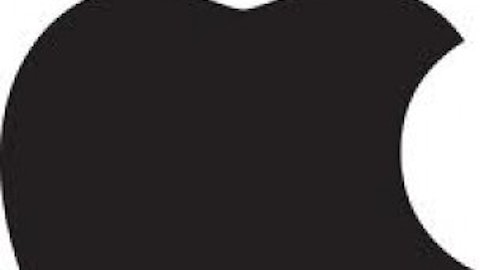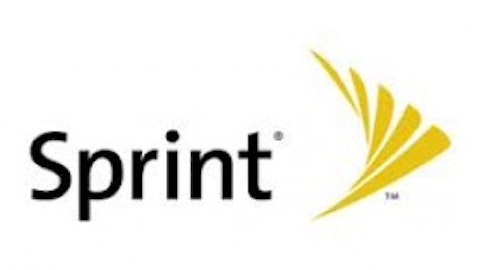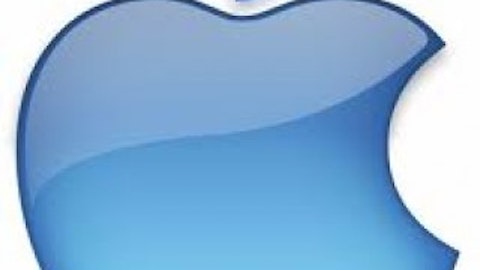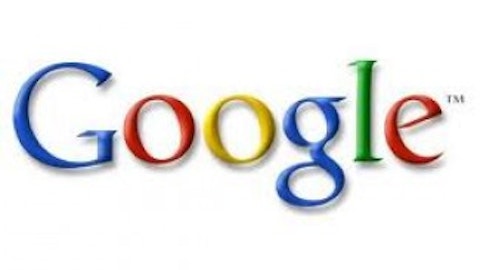Putting an ad in the Super Bowl is a gamble. It costs millions, but reaches millions. It can reinvigorate (Audi’s 2011 “Escape Old Luxury” commercial), it can bomb (Groupon’s 2011 “Free Tibet” ad, which used a serious geopolitical issue to hock cheap soup), or, worst of all, it can be completely unmemorable (like that one about the car…with the thing? Remember? Of course you don’t). Which is why I was intrigued to see what Research In Motion Ltd (NASDAQ:BBRY) would cook up for their much-hyped $4 million Super Bowl ad.
Ad or no ad, BlackBerry needs its own 108-yard touchdown run with the BlackBerry 10. It’s woefully behind in the consumer smartphone market, and unlike Microsoft Corporation (NASDAQ:MSFT), it doesn’t have a side line of highly successful office software to fall back on. With this move, BlackBerry was announcing that they were “ready for prime time.” But was their ad?

1. Where Was the Rationale?
While the ad itself (featuring a guy whose smartphone can perform amazing feats, like setting him on fire or making him disappear in a puff of smoke) was well-made and reasonably entertaining, the ad’s tag (“It’s quicker to show you what it can’t do!”) was a poor choice for showcasing an unfamiliar product.
Evidence shows that people don’t switch brands (whether laundry soap or smartphones) unless they have a very compelling reason to do so, usually either price or quality. This ad highlighted neither. While showing what the phone can’t do may well be “quicker,” it’s not “smarter,” because as a viewer, I still have no idea why I should pick the BlackBerry 10 over Apple Inc. (NASDAQ:AAPL)’s iPhone or one running Google Inc (NASDAQ:GOOG)’s Android. None of those phones can make me disappear in a puff of smoke either, and odds are I already own one. Missed opportunity.
Research In Motion Ltd (NASDAQ:BBRY) should have taken a leaf from Apple’s playbook. Cupertino’s recent “Orchestra” commercial isn’t one of their most memorable, but it highlights a specific feature of the iPhone 5: a noise-canceling “background microphone” that improves voice quality. This has long been a complaint about smartphones in general (“I can access my stock portfolio, but I can’t hear the people I’m talking to!”), and provides a compelling case to buy the phone.
What’s especially galling here is that the BlackBerry 10 has a great feature that really could make people sit up and take notice: the “time warp” camera, in which you can “roll back” the expression on someone’s face in a photo, in case they blink or twitch. If you haven’t seen it, check it out here: it truly does look really cool. Apple’s taken a few hits for not upgrading its camera enough in the iPhone 5, so this could be a great selling point for shutter bugs. What did we get instead? Elephant feet.
2. Where Was the Phone?
Aside from a one-second closeup at the end of the commercial, we didn’t see much of the actual device. It was covered by the guy’s hand for most of the ad. It’s really hard to sell me on a product when you’re not even showing me what it looks like or how big it is (4.2″ screen, incidentally, which may be why they didn’t tout that. In an era where bigger is starting to be better again, this only beats the iPhone 5 by a measly .2 inches and loses handily to many Android phones). Plus, the thing looks an awful lot like an iPhone. Wouldn’t I just be better off getting an iPhone?
I’m not sure. The commercial made no reference to the price, which may not be completely finalized (Verizon says it will be $199 with a two-year contract), nor did it show much of the screen interface (beyond a couple of sideswipes). In a press release, Frank Boulben, BBRY’s Chief Marketing Officer, explained why:
“In our debut appearance at the Super Bowl we knew that it wasn’t feasible to communicate the rich experience of BlackBerry 10. We decided to use the light hearted spirit of Super Bowl ads to showcase what BlackBerry 10 can’t do. We wanted to let people know that BlackBerry is back and that BlackBerry 10 is worth checking out.”
Well, I am not convinced.
3. For That Matter, Where IS the Phone?
But let’s say that you were convinced, based on the commercial, that BlackBerry 10 was “worth checking out.” You head down to your local wireless store to do so. What do you find? Well, not a BlackBerry 10. The phone won’t be released in the US until sometime in March — probably late March. That means there’s going to be almost a two-month delay between the ad and the product, by which point we’ll all be thinking about other things. At least Microsoft waited until the Surface’s launch was imminent before advertising it! Same with Samsung and the Galaxy Note II! Wouldn’t it have been better to drop the $4 million in ad buys during March Madness? They wouldn’t reach 100 million viewers all at once, true, but they would reach a few million multiple times. And BlackBerry will have to buy ads in March anyway.
The Final Score
I’ve been bearish on BlackBerry for years now, and although their stock price rose about $2 (14%) on Monday (which is to be expected), I’m more concerned now than ever. The decision to drop $4 million on a single 30-second spot two months before the product is even available seems a questionable management decision to me, and beyond “Super Bowl ad,” I’ve yet to hear anyone at BlackBerry explain how they will woo new users or overcome their image problem.
However, it’s possible that I’m wrong and this presages a BlackBerry renaissance. It’s also possible that an oil tanker might transform into a pile of rubber duckies. I’m not betting on either.
I’d love to hear in the comments what those bullish on BlackBerry thought of the ad and whether it makes you more or less confident in the company.
The article 3 Reasons BlackBerry’s Super Bowl Ad Fumbled originally appeared on Fool.com and is written by John Bromels.
Copyright © 1995 – 2013 The Motley Fool, LLC. All rights reserved. The Motley Fool has a disclosure policy.





